News
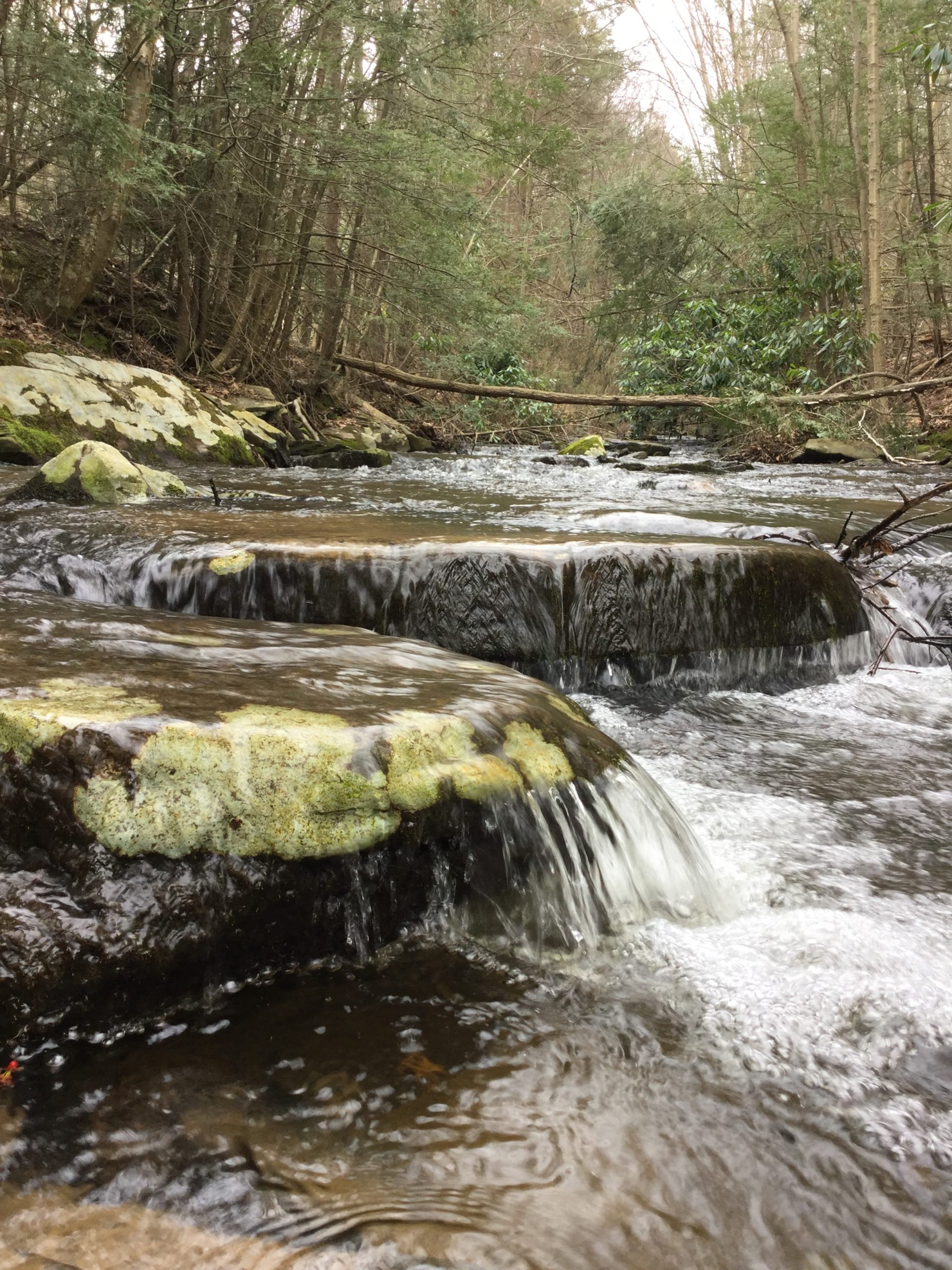
Report on Environmental Quality of Pike County Streams: 2019
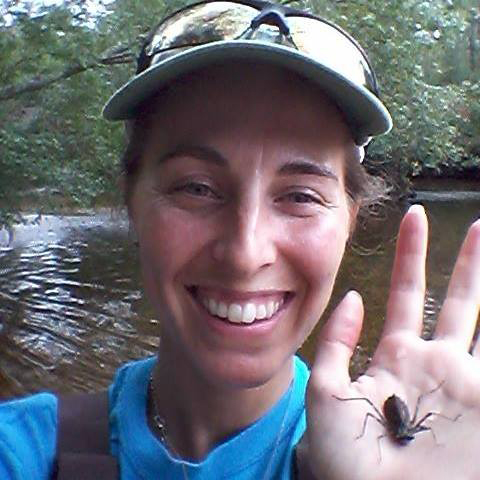
Article By Rachel Posavetz, watershed specialist, pictured here holding a dragonfly nymph
Pike County Conservation District (PCCD) has maintained a Surface Water Monitoring Program, focused on monitoring stream health, for 28 years. We have been annually monitoring aquatic macroinvertebrate (aquatic insects and shellfish) populations since 1991, and fish populations since 1995, along with water chemistry and habitat quality of stream sites throughout Pike County. Aquatic macroinvertebrates and fish are widely used as reliable bio-indicators of freshwater health in studies of water quality.
PCCD Watershed Specialist Rachel Posavetz, assisted by staff and volunteers, samples macroinvertebrates when they are most abundant in the spring, using a D-frame kick net to disturb critters from their rocky river-bottom habitat. In the late summer when low water levels ease the ability to collect fish, Rachel and staff, in coordination with PCCD’s consultant, Aquatic Resource Consulting, Inc., sample fish populations using electrofishing gear to temporarily stun specimens that are then released unharmed.
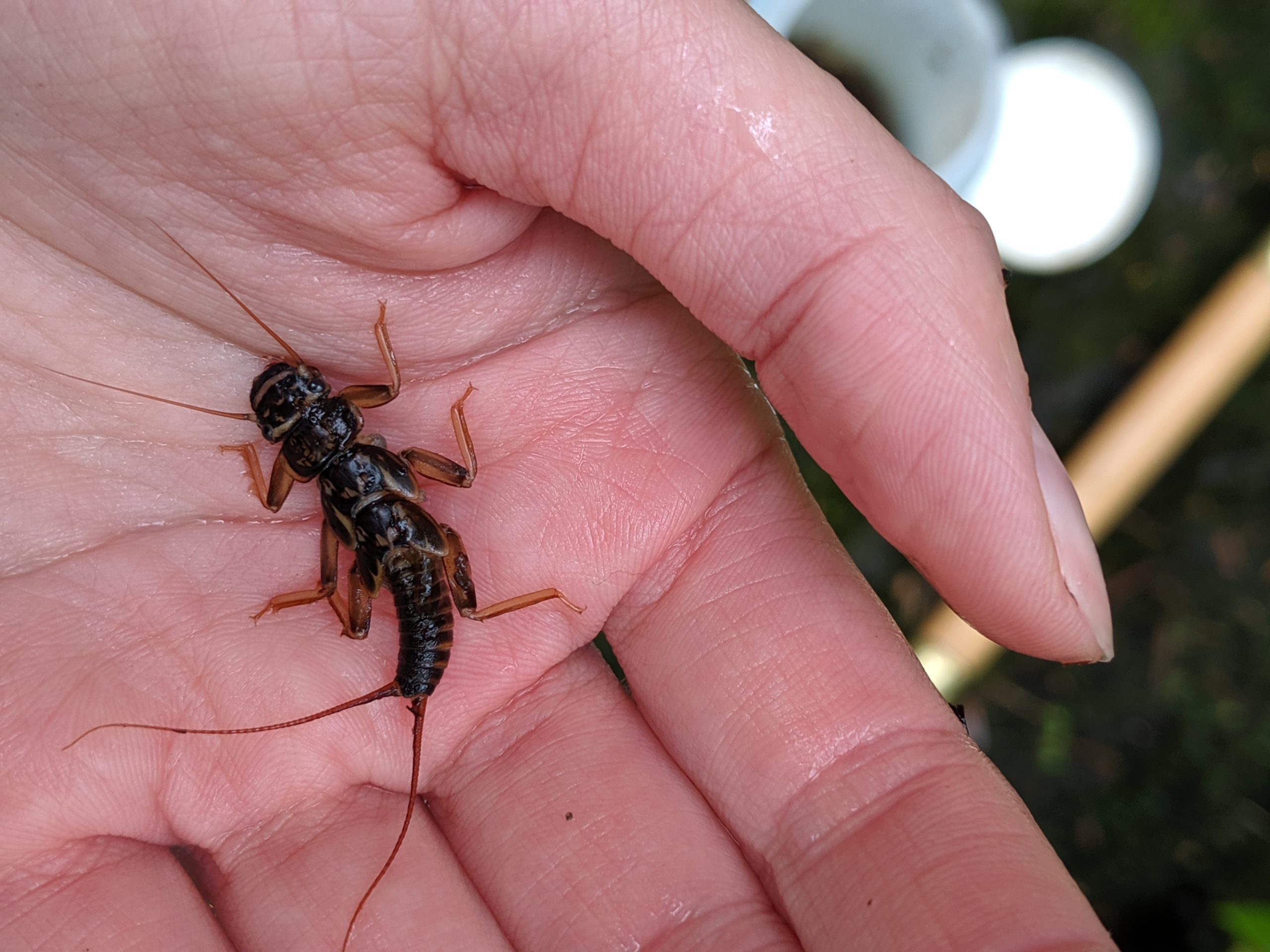
This macroinvertebrate member of the EPT fauna group is a Stonefly. This particular one is in the Perlidae family, predatory of other macroinvertebrates.
Macroinvertbrate Results
In April and May of 2019, thirteen stream sites were sampled to analyze their macroinvertebrate populations. We found that all of the sites scored well, with the highest overall scores at Sawkill Creek, Shohola Creek, East Branch Wallenpaupack Creek, and Little Bushkill Creek. This means these four sites had a combination of high macroinvertebrate diversity and a high number of types of macroinvertebrates that are sensitive to pollution.
What is EPT?
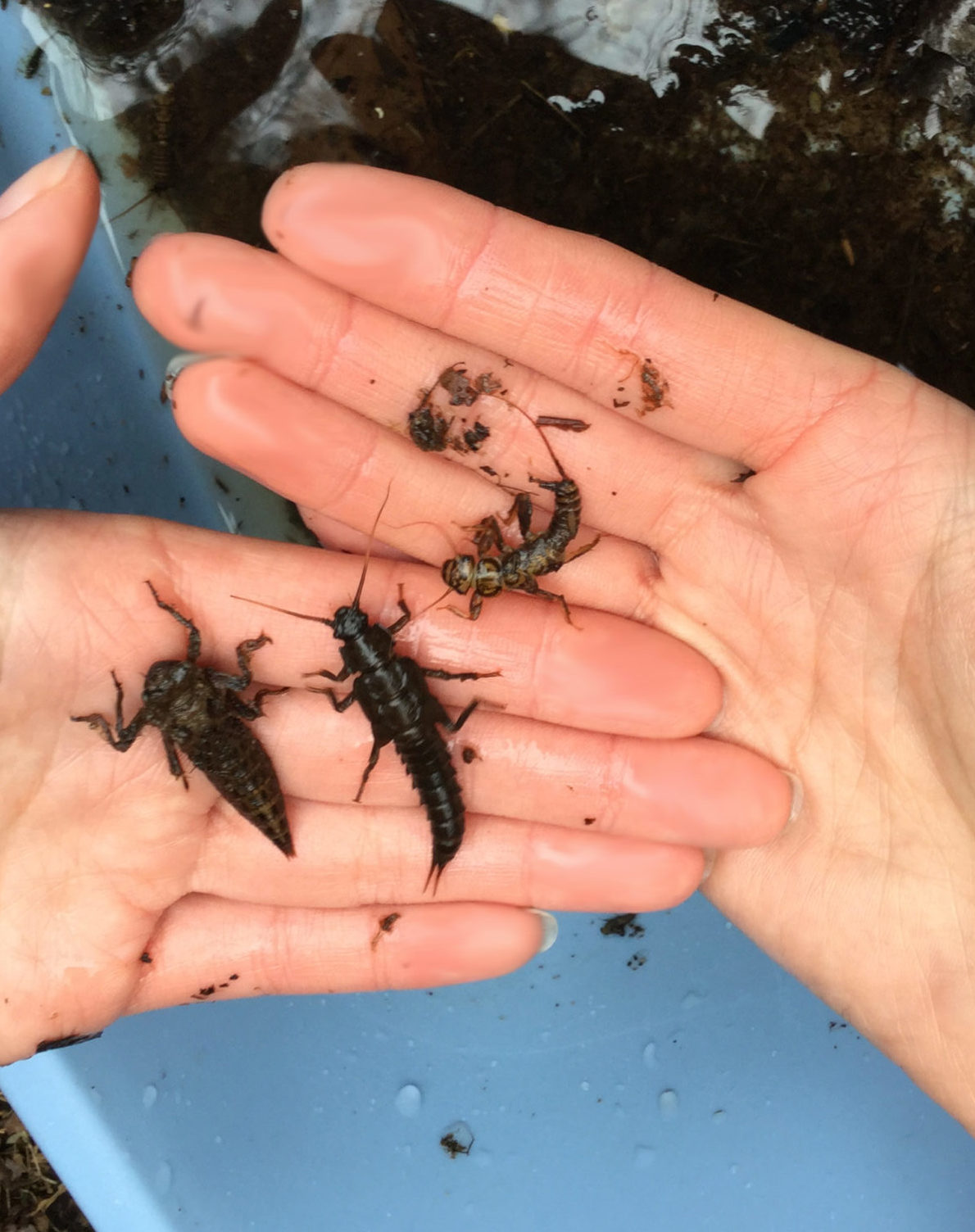
Remarkably large macroinvertebrates are collected from a stream sample: dragonfly nymph, and two stonefly nymphs from different families (Pteronarcyidae and Perlidae).
The majority of the most pollution-sensitive types of macroinvertebrates (called “EPT fauna”) are representatives of these three insect families: Ephemeroptera (Mayflies), Plecoptera (Stoneflies), and Trichoptera (Caddisflies). The presence of pollution-sensitive macroinvertebrates in a stream indicates that the water quality and stream habitat are healthy. These EPT fauna, or sensitive macroinvertebrates, typically require high oxygen levels, cold temperatures, stable habitat, minimal suspended sediment, native tree leaf food sources, and clean water with minimal anthropogenic (human-caused) sources of pollution. Meaning, sensitive types of macroinvertebrates will not be present in degraded waters because they cannot survive where their basic needs are not met. There are several other families of macroinvertebrates that contain sensitive species, but EPT are the most reliable focus of most scientific research regarding macroinvertebrates as bio-indicators. In fact, fly fisher-men/women will be very familiar with the wide diversity of macroinvertebrates as they are mimicked in the flies used to snag freshwater fishes, such as brook trout.
All About Trout
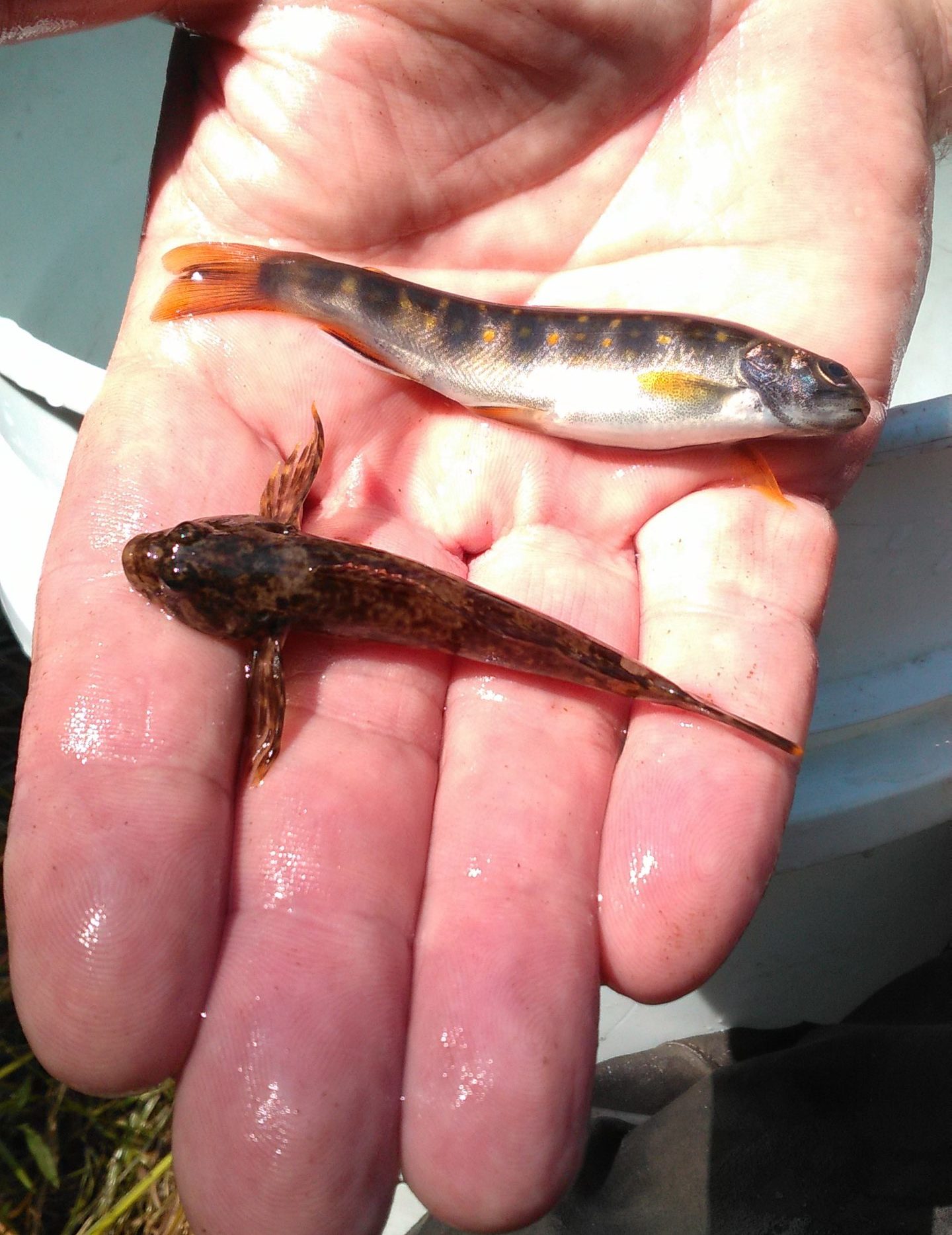
A young-of-year brook trout and slimy sculpin indicate high quality stream conditions, through their sensitive species and the presence of natural reproduction.
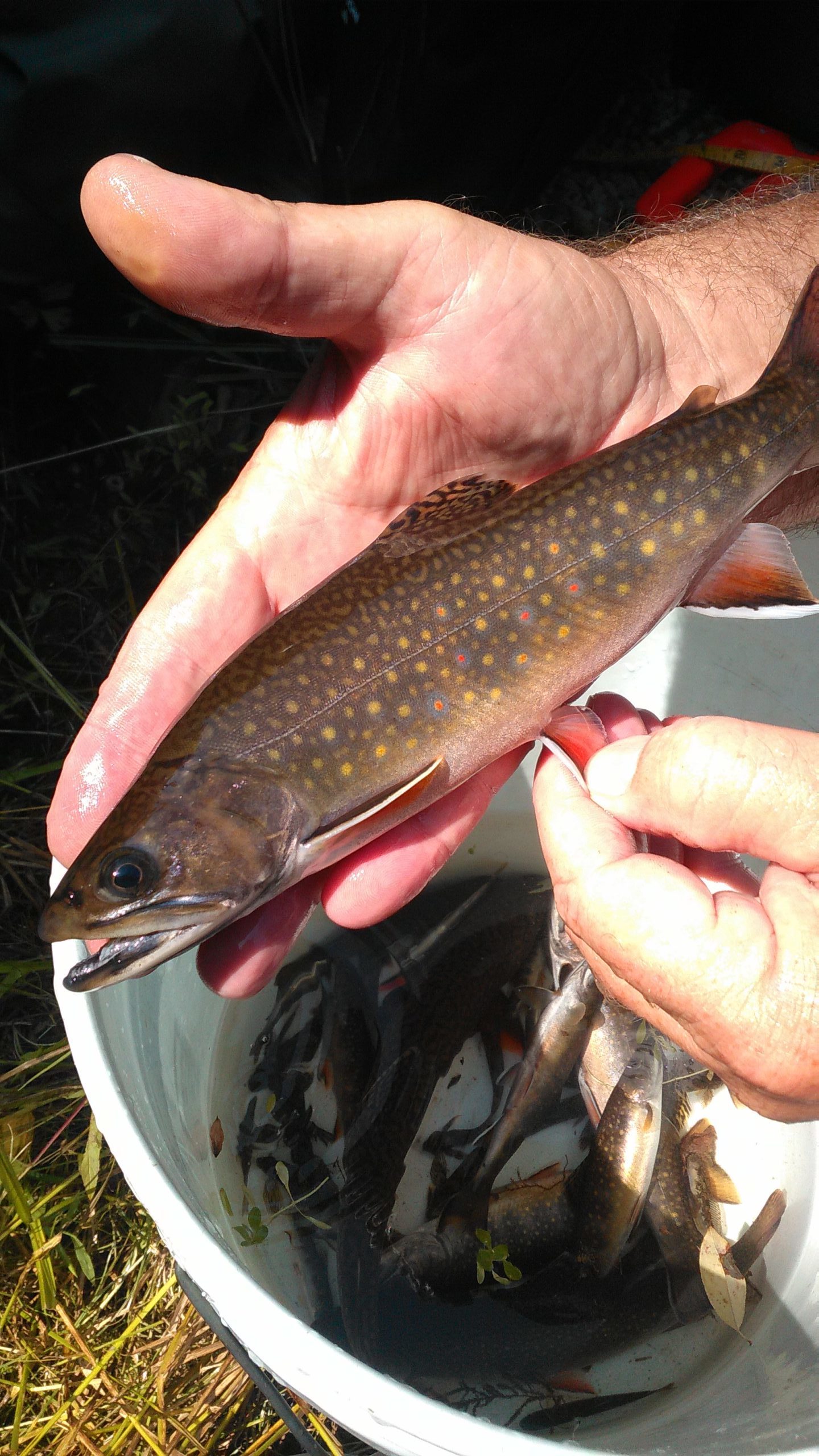
ARC Consultant, Ken Ersbak, demonstrates the characteristic white fin margin that distinguishes a brook trout from brown trout.
In late July and August, seven stream sites were sampled for fish populations. We collected a total of 450 fish, representing 15 species, with every specimen exhibiting good health as shown by the absence of physical anomalies. Five of the sites had brown and/or brook trout, with young-of-year at four of those sites, exhibiting the occurrence of natural reproduction. Slimy sculpin, a highly pollution-sensitive fish, were also collected at two sites. These are all great signs of high water quality!
How Can Chemistry and Habitat Matter?
Through both spring and late summer stream monitoring, water chemistry and stream site habitat data reflected expected values typical for this region. In particular, water temperatures (low) and dissolved oxygen levels (high) were generally good for sensitive macroinvertebrates and fish. Conductivity readings were low, meaning low concentrations of dissolved solids, such as minerals, road salt, and anthropogenic wastes.
All sites scored “Optimal” for habitat conditions, exceeding PADEP standards; meaning the habitat quality at every site scored well within the range for the highest quality category. Habitat quality is important both in-stream and along the banks, or riparian zone, of the stream. Stable habitat in-stream provides shelter for macroinvertebrates and fish, and is an indication of controlled stormwater inputs. Stable habitat along the banks provides various forms of protection for the stream. More on stable bank habitat can be found in our article about Riparian Buffers.
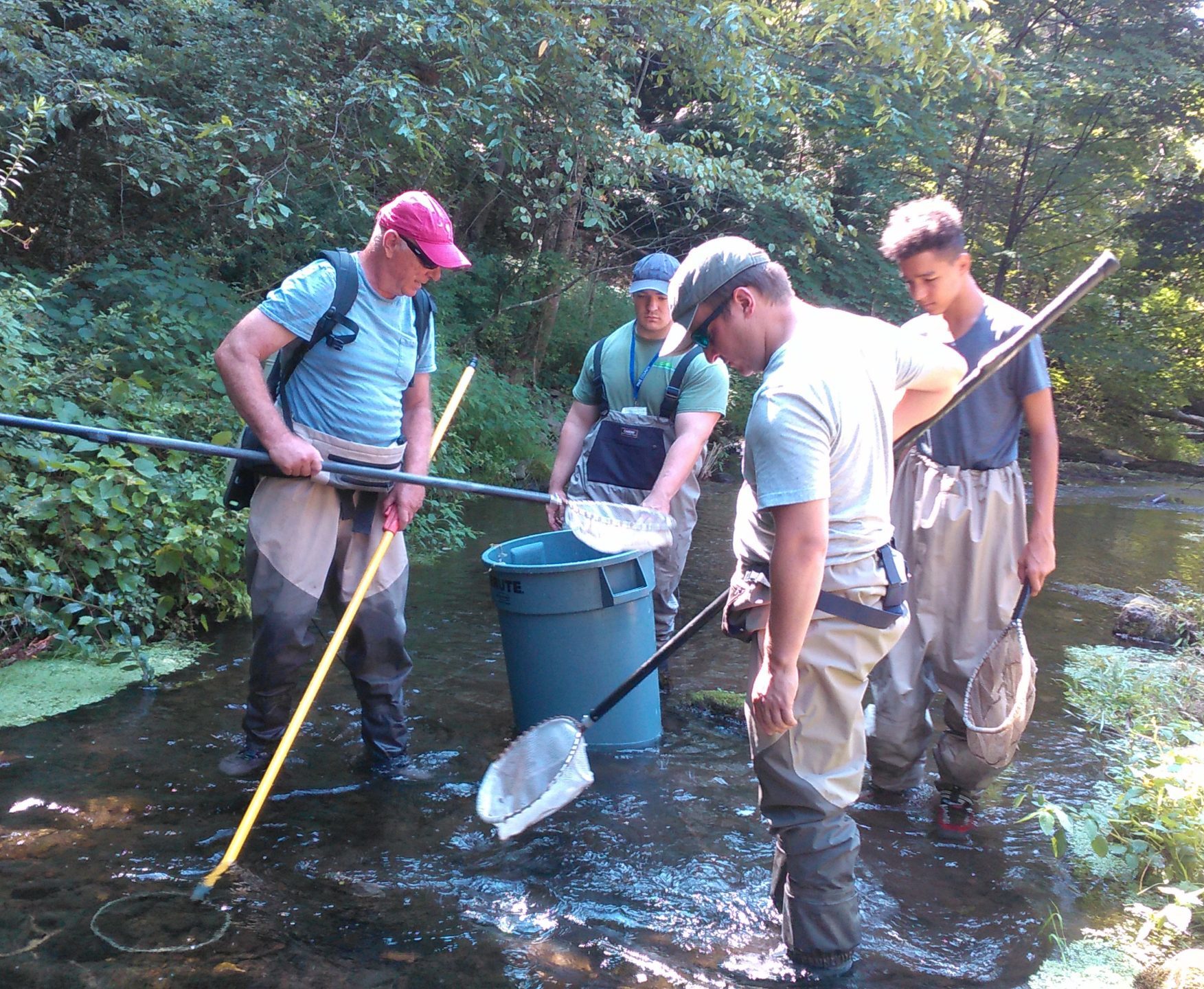
The fish sampling team comprised of PCCD Staff person Jeremy Oettinger and Ken Ersbak from ARC Consulting and his assistants with their electrofishing gear.
Why does the PCCD monitor streams?
PCCD monitors about 40 stream sites throughout Pike County on a five-year rotational basis to supplement the extent of data collection capabilities by PADEP. Our role of monitoring water quality locally affords the ability to catch potential changes early and to be an educational resource to local residents, watershed associations and the fishing community. This also helps enhance the support of the county’s High Quality (HQ) and Exceptional Value (EV) streams for potential stream re-designation.
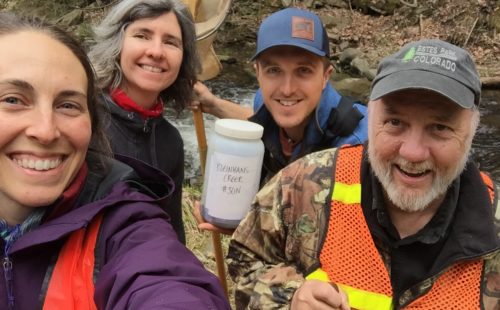
PCCD Staff Rachel Posavetz and Krista Gromalski, LWWMD Executive Director Nick Spinelli, and PCCD Board Member Paul Ranello had a great day sampling macroinvertebrates at Kleinhans Creek.
2019 Report Available
Check out the 2019 Environmental Quality of Pike County Streams Report to find out if your local stream was sampled this year. You can also learn more about which stream sites have naturally reproducing trout, and which macroinvertebrates might be great fly-tying models for fly fishing this coming spring! Thank you to the many landowners that support this program by allowing us stream access via their property, we could not deliver this program without them!
